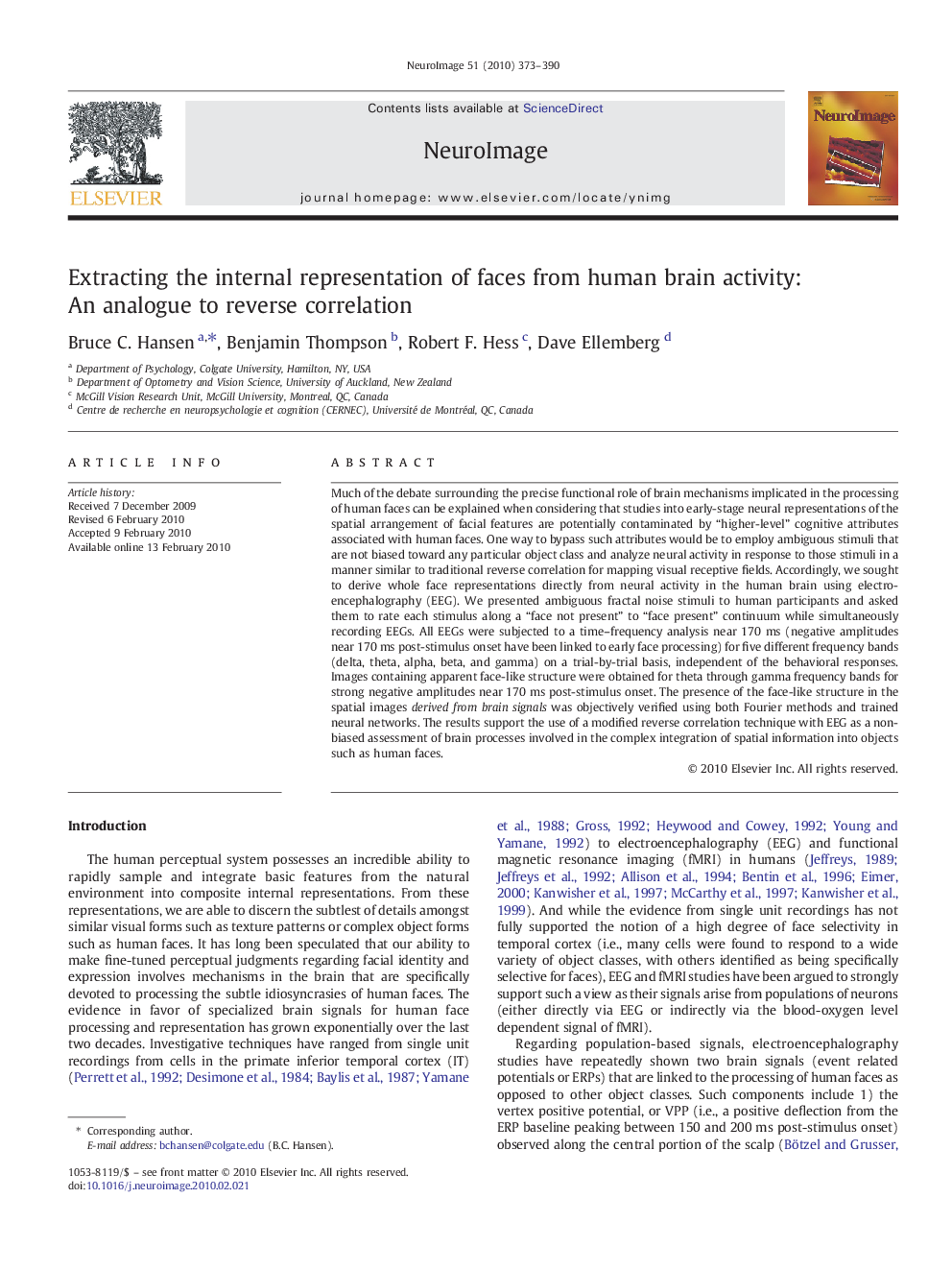| Article ID | Journal | Published Year | Pages | File Type |
|---|---|---|---|---|
| 6036165 | NeuroImage | 2010 | 18 Pages |
Abstract
Much of the debate surrounding the precise functional role of brain mechanisms implicated in the processing of human faces can be explained when considering that studies into early-stage neural representations of the spatial arrangement of facial features are potentially contaminated by “higher-level” cognitive attributes associated with human faces. One way to bypass such attributes would be to employ ambiguous stimuli that are not biased toward any particular object class and analyze neural activity in response to those stimuli in a manner similar to traditional reverse correlation for mapping visual receptive fields. Accordingly, we sought to derive whole face representations directly from neural activity in the human brain using electroencephalography (EEG). We presented ambiguous fractal noise stimuli to human participants and asked them to rate each stimulus along a “face not present” to “face present” continuum while simultaneously recording EEGs. All EEGs were subjected to a time-frequency analysis near 170Â ms (negative amplitudes near 170Â ms post-stimulus onset have been linked to early face processing) for five different frequency bands (delta, theta, alpha, beta, and gamma) on a trial-by-trial basis, independent of the behavioral responses. Images containing apparent face-like structure were obtained for theta through gamma frequency bands for strong negative amplitudes near 170Â ms post-stimulus onset. The presence of the face-like structure in the spatial images derived from brain signals was objectively verified using both Fourier methods and trained neural networks. The results support the use of a modified reverse correlation technique with EEG as a non-biased assessment of brain processes involved in the complex integration of spatial information into objects such as human faces.
Related Topics
Life Sciences
Neuroscience
Cognitive Neuroscience
Authors
Bruce C. Hansen, Benjamin Thompson, Robert F. Hess, Dave Ellemberg,
